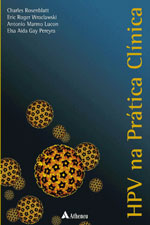- Home
- Quem Somos
- HPV Livro
- HPV Livro: 1. Epidemiologia do HPV
- HPV Livro: 2. Biologia do HPV
- HPV Livro: 3. Patogênese e a Importância do Homem como Transmissor
- HPV Livro: 4. História Natural e Quadro Clínico do HPV nos Homens
- HPV Livro: 5. HPV nas Mulheres
- HPV Livro: 6. HPV nas Mulheres Métodos de Diagnóstico
- HPV Livro: 7. Tratamento HPV
- HPV Livro: 8. Novas Terapêuticas
- HPV Livro: 9. Tratamento com Laser
- HPV Livro: 10. HPV e Papiloma de Laringe
- HPV Livro: 11. HPV em Coloproctologia
- HPV Livro: 12. HPV Bucal
- HPV Livro: 13. Câncer de Pênis
- HPV Livro: 14. Síndrome da Imunodeficiência Adquirida (Aids)
- HPV nos homens
- Infecção HPV
- Fotos de HPV
- Videos de HPV
- Artigos de HPV
- Blog
- Contato
DNA de HPV Oncogênico na boca é detectado em 3.5 por cento dos homens adultos.
Os homens têm uma prevalência mais elevada de papillomavirus humano oral oncogênico (HPV) do que mulheres, e aumento da prevalência com o número de sexual oral com seus parceiros(as) e do tabaco , de acordo com um estudo publicado outubro no Annals do Oncology. Gypsyamber D’Souza, Ph.D., da escola de Johns Hopkins de saúde pública em Baltimore, e de dados obtidos de 2009 a 2014 . Os investigadores detectaram o DNA oral de HPV em 3.5 por cento de todos os 13.089 adultos com idade de 20 a 69 anos incluídos no estudo; o risco da vida do cancer orofaríngeo era baixo em 37 por 10.000. Do total de pacientes , 8.1 e 2.1 dos homens de 50 a 59 anos tiveram uma infecção oral por DNA de HPV oncogênica ou uma infecção por HPV16 , respectivamente, mas somente 0.7 por cento desenvolveram o câncer orofaríngeo . Os homens tiveram uma prevalência mais elevado de HPV oral oncogênico do que as mulheres. A elevada prevalência, (14.9 por cento) foi visto nos homens que atualmente são tabagistas e que tiveram cinco ou mais parceiros (as)sexual durante a vida.
Understanding personal risk of oropharyngeal cancer: risk-groups for oncogenic oral HPV infection and oropharyngeal cancer
G D’Souza T S McNeel C Fakhry
Annals of Oncology, mdx535, https://doi.org/10.1093/annonc/mdx535
Published: 19 October 2017
References
1 Saraiya M, Unger ER, Thompson TD et al. US assessment of HPV types in cancers: implications for current and 9-valent HPV vaccines. J Natl Cancer Inst 2015; 107(6): djv086.
Google ScholarCrossRefPubMed
2 Jemal A, Simard EP, Dorell C et al. Annual Report to the Nation on the Status of Cancer, 1975–2009, featuring the burden and trends in human papillomavirus(HPV)-associated cancers and HPV vaccination coverage levels. J Natl Cancer Inst 2013; 105(3): 175–201.
Google ScholarCrossRefPubMed
3 Chaturvedi AK, Engels EA, Pfeiffer RM et al. Human papillomavirus and rising oropharyngeal cancer incidence in the United States. J Clin Oncol 2011; 29(32): 4294–4301.
Google ScholarCrossRefPubMed
4 D’Souza G, Cullen K, Bowie J et al. Differences in oral sexual behaviors by gender, age, and race explain observed differences in prevalence of oral human papillomavirus infection. PLoS One 2014; 9(1): e86023.
Google ScholarCrossRefPubMed
5 D’Souza G, Zhang Y, Merritt S et al. Patient experience and anxiety during and after treatment for an HPV-related oropharyngeal cancer. Oral Oncol 2016; 60: 90–95.
Google ScholarCrossRefPubMed
6 SEER Incidence and Incidence-Based Mortality Data, SEER 18 Regs (Excl Lousiana) 1973–2014; https://seer.cancer.gov/data/ (8 May 2017, date last accessed).
7 Gillison ML, Broutian T, Pickard RKL et al. Prevalence of oral HPV infection in the United States, 2009–2010. JAMA 2012; 307(7): 693–703.
Google ScholarCrossRefPubMed
8 NHANES 2013–2014: Human Papillomavirus (HPV) – Oral Rinse Data Documentation, Codebook, and Frequencies; https://wwwn.cdc.gov/Nchs/Nhanes/2013-2014/ORHPV_H.htm (2 May 2017, date last accessed).
9 IARC. Human Papillmoaviruses; monographs.iarc.fr/ENG/Monographs/vol100B/mono100B-11.pdf (23 May 2017, date last accessed).
10 DevCan: Probability of Developing or Dying of Cancer – Surveillance Research Program; https://surveillance.cancer.gov/devcan/ (8 May 2017, date last accessed).
11 D’Souza G, Wentz A, Kluz N et al. Sex differences in risk factors and natural history of oral human papillomavirus (HPV) infection. J Infect Dis 2016;213(12):1893–1896.
12 Chaturvedi AK, Graubard BI, Broutian T et al. NHANES 2009–2012 findings: association of sexual behaviors with higher prevalence of oral oncogenic human papillomavirus infections in U.S. men. Cancer Res 2015; 75(12): 2468–2477.
Google ScholarCrossRefPubMed
13 Beachler DC, Sugar EA, Margolick JB et al. Risk factors for acquisition and clearance of oral human papillomavirus infection among HIV-infected and HIV-uninfected adults. Am J Epidemiol 2015; 181(1): 40–53.
Google ScholarCrossRefPubMed
14 Pierce Campbell CM, Kreimer AR, Lin H-Y et al. Long-term persistence of oral human papillomavirus type 16: the HPV Infection in Men (HIM) study. Cancer Prev Res Phila Pa 2015; 8(3): 190–196.
Google ScholarCrossRef
15 Holzinger D, Wichmann G, Baboci L et al. Sensitivity and specificity of antibodies against HPV16 E6 and other early proteins for the detection of HPV16-driven oropharyngeal squamous cell carcinoma. Int J Cancer 2017; 140(12): 2748–2757.
Google ScholarCrossRefPubMed
16 Beachler DC, Waterboer T, Pierce Campbell CM et al. HPV16 E6 seropositivity among cancer-free men with oral, anal or genital HPV16 infection. Papillomavirus Res 2016; 2: 141–144.
Visite Facebook:



